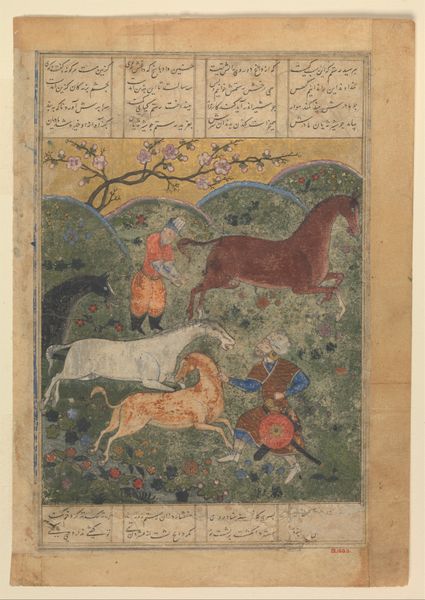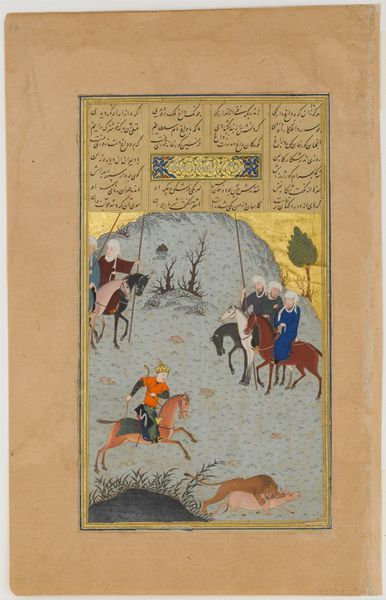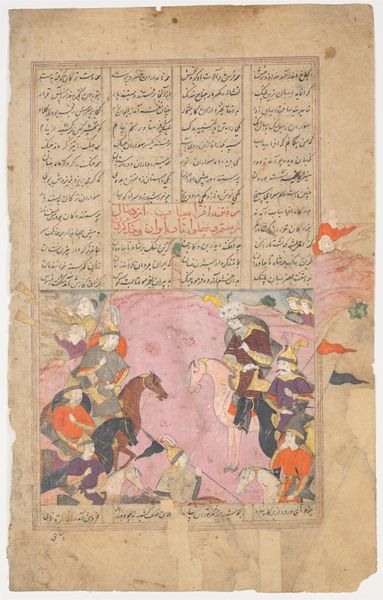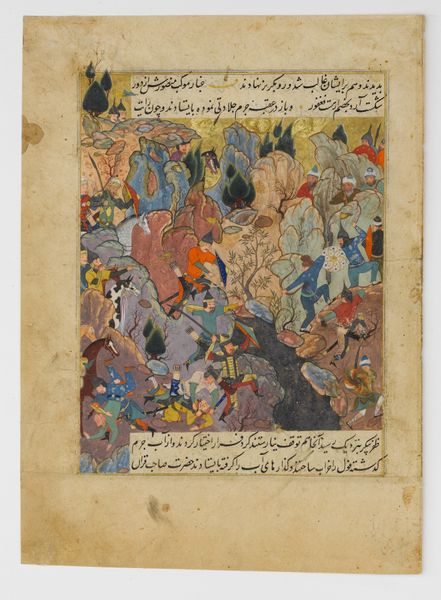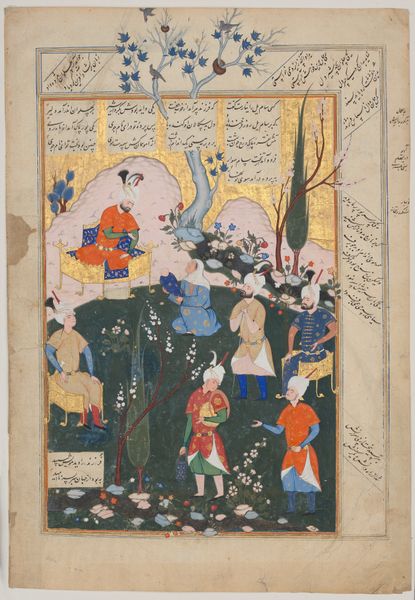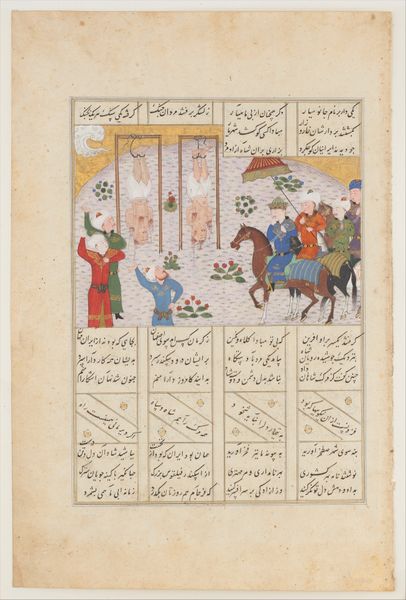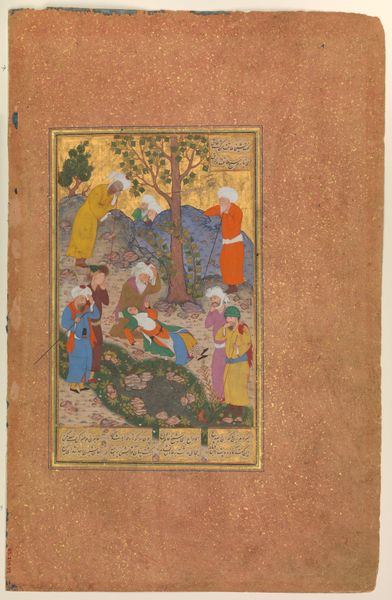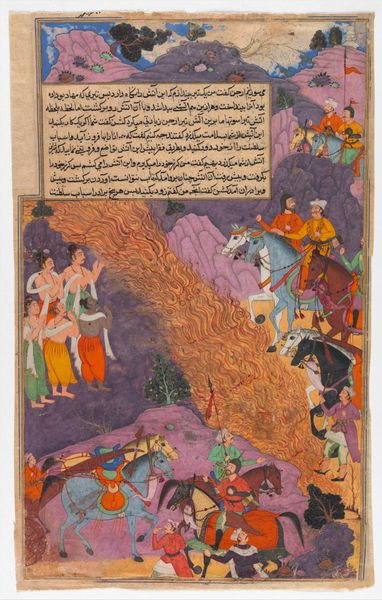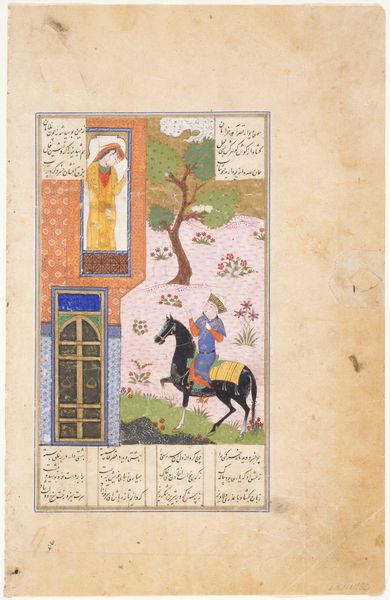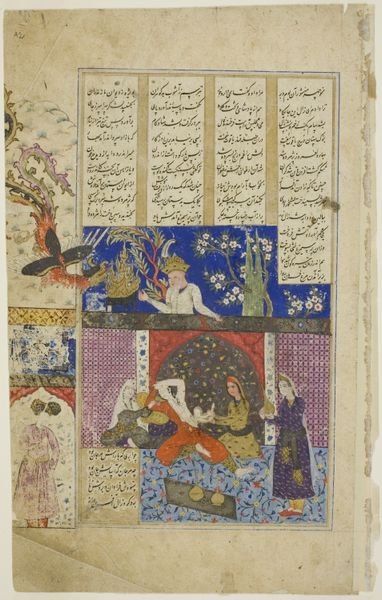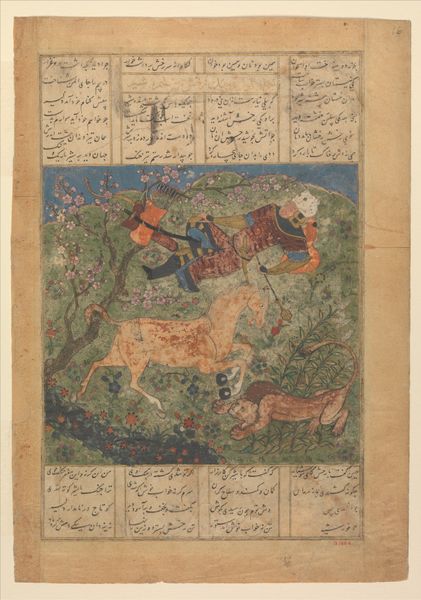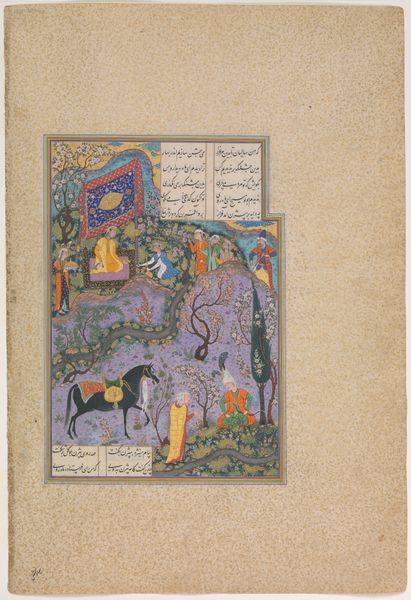
"The Angel Gabriel meets 'Amr ibn Zaid (the Shepherd)", Folio from a Siyer-i Nebi (the Life of the Prophet) 1570 - 1620
0:00
0:00
painting, watercolor
#
water colours
#
narrative-art
#
muted colour palette
#
painting
#
landscape
#
watercolor
#
horse
#
men
#
islamic-art
#
miniature
Dimensions: H. 14 9/16 in. (37 cm) W. 10 1/4 in. (26 cm)
Copyright: Public Domain
Curator: This folio, currently housed at the Metropolitan Museum of Art, presents "The Angel Gabriel meets 'Amr ibn Zaid (the Shepherd)". It's from the Siyer-i Nebi, "the Life of the Prophet," and was created sometime between 1570 and 1620. It’s attributed to Mustafa ibn Vali. Editor: It strikes me immediately as ethereal, almost dreamlike. The figures and landscapes are depicted with such soft, muted watercolor washes. There's a gentle quality that contradicts the implied power of a divine encounter. Curator: Indeed, and contextually, the Siyer-i Nebi was an official Ottoman court project. It tells the life of Muhammad, shaping Ottoman imperial identity and piety through lavish illustration and detailed narrative. Considering the labor and cost of pigment production at that time adds to the picture. Editor: Absolutely. Thinking about the making of this piece - the crafting of the paper, the grinding and mixing of pigments to create these delicate watercolors, the labor-intensive process of calligraphy... all of that brings me to a deeper respect for the skills of those involved in the book production, rather than thinking only of it as illustration, or something created for aesthetic appreciation. And it certainly challenges the boundaries between art and craft. Curator: It's a critical lens, examining both the power structures inherent in its creation and the skilled labor that gave it form. The encounter depicted isn’t merely a religious scene; it's a carefully constructed narrative bolstering a particular sociopolitical and religious perspective within the Ottoman context. We can examine whose vision is upheld in this kind of art, and to what end. Editor: The very choice of materials and their specific manipulation speaks volumes. For instance, that slightly rough, handmade quality of the paper stock juxtaposes with the meticulous precision of the figuration and the calligraphy, really speaks to its origins. Curator: Examining the identity of both figures here we are shown both messenger and receiver in this sacred interaction. A lens to think about intersections of divinity, masculinity and perhaps Ottoman notions of power at the time the piece was created. Editor: Well, after our discussion, I can see more layers that elevate the materiality. Not just as a means of illustration, but as a crafted tool, an item made through laborious techniques. Curator: For me, approaching it as a dialogue between material reality and symbolic intent unveils so much about Ottoman society and their self-representation through visual culture.
Comments
No comments
Be the first to comment and join the conversation on the ultimate creative platform.
